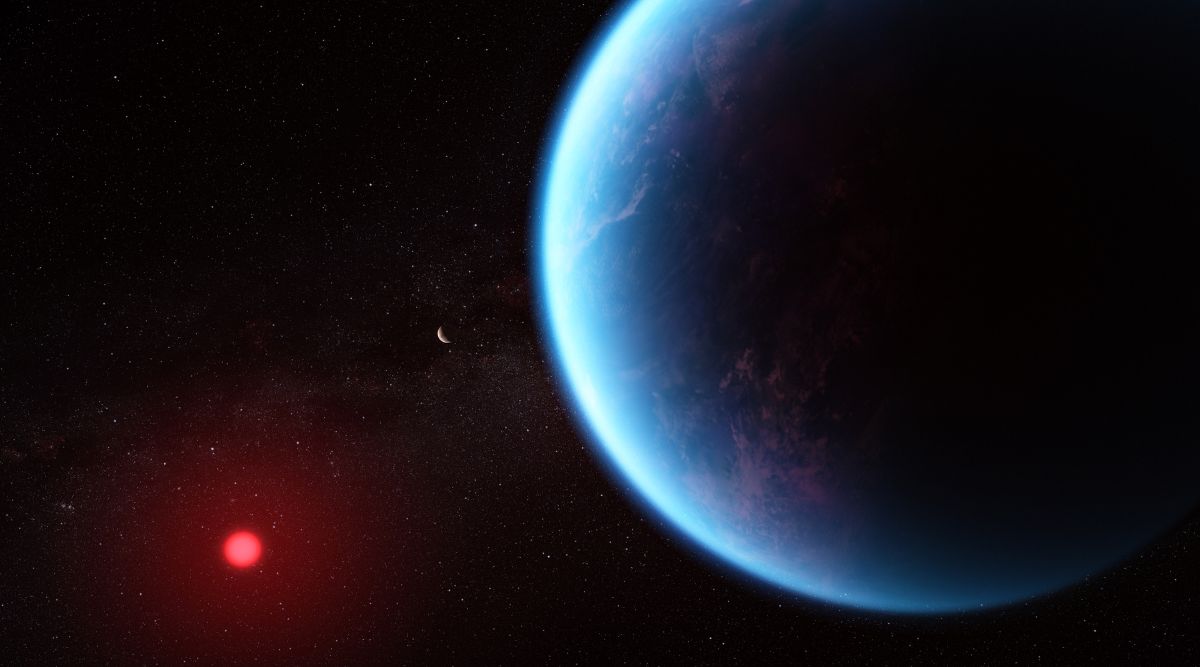Scientists used the James Webb Space Telescope to look into the planet K2-18 b and found the presence of carbon-bearing molecules like methane and carbon dioxide. The planet is 8.6 times as massive as Earth and recent studies have suggested that its surface could be covered with water oceans and that it has a hydrogen-rich atmosphere.
The planet K2-18 b orbits the cool dwarf star K2-18 in the “goldilocks zone: where it gets just enough starlight to have liquid water while not enough to boil it off into vapour. The planet is about 120 light-years away from us in the constellation Leo. Studies suggest that it is a “Hycean planet” — a hypothetical type of planet described as a hot, water-covered planet with a hydrogen atmosphere. Some scientists believe that Hycean planets are excellent candidates to search for evidence of life.

The results of the research have been accepted for publication in the journal Astrophysical Journal Letters, according to NASA.
Also read | Ian Wilmut, scientist behind Dolly the sheep, dies at 79
“Our findings underscore the importance of considering diverse habitable environments in the search for life elsewhere. Traditionally, the search for life on exoplanets has focused primarily on smaller rocky planets, but the larger Hycean worlds are significantly more conducive to atmospheric observations,” said Nikku Madhusudhan, lead author of the paper, in a press statement.
Most Read 1Chandrayaan-3 mission: Dawn breaks on Moon, all eyes on lander, rover to wake up 2As Indo-Canadian relations sour, anxiety grips Indian students, residents who wish to settle in Canada 3Karan Johar says Sanjay Leela Bhansali did not call him after Rocky Aur Rani: ‘He’s never called me but…’ 4Gadar 2 box office collection day 40: Hit by Shah Rukh Khan’s Jawan onslaught, Sunny Deol movie ends BO run with Rs 45 lakh earning 5Shubh’s tour in India cancelled: Why is the Canada-based singer facing the music?
The researchers believe the abundance of methane and carbon dioxide along with a shortage of ammonia supports the hypothesis that there could be a water ocean hiding under a hydrogen rich atmosphere on the planet. The study also documents a possible detection of a molecule called dimethyl sulphide. On our planet, this is only produced by life. The majority of the dimethyl sulphide on Earth is emitted by phytoplankton in the oceans.
But this inference is not completely robust. ““Upcoming Webb observations should be able to confirm if DMS is indeed present in the atmosphere of K2-18 b at significant levels,” added Madhusudhan.
Also ReadChandrayaan-3 mission: Dawn breaks on Moon, all eyes on lander, rover to …NASA’s Parker Solar Probe flies through powerful explosion from Sun, take…On India’s first solar mission, Aditya-L1 begins collecting data: ISROWatch this space: ‘Alien corpses,’ NASA UFO team director & Webb’s ‘life …
K2-18b does lie in the habitable zone and it does have carbon-bearing molecules but that does not necessarily mean that it can support life. It has a radius 2.6 times that of Earth and this likely means that it has a large mantle of high-pressure ice.
© IE Online Media Services Pvt Ltd


